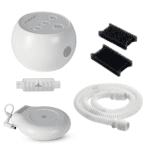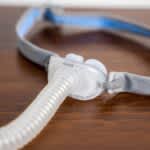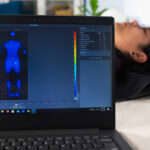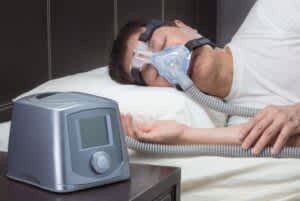Hypercapnia is the medical term for elevated carbon dioxide levels in the blood. Knowing the symptoms of hypercapnia is important in order to detect it early and prevent serious issues from occurring. When mild, hypercapnia can cause shortness of breath and sluggishness, but when more severe it can lead to seizures, confusion and ultimately to cardiac arrest if not treated.
What is Hypercapnia?
Hypercapnia, also known as hypercarbia, occurs when carbon dioxide levels in the blood rise above normal levels. The severity of hypercapnia can vary from mild to serious depending on how much carbon dioxide is in the blood and the rate at which they rise. Hypercapnia is typically a sign of a medical issue that affects the respiratory system, metabolic processes or both.
The respiratory system consists of a person’s airway and lungs which connect to the bloodstream for gas exchange. When a person inhales, the respiratory system takes in oxygen and delivers it to every cell in the body. During exhalation, carbon dioxide gets removed from the body as a waste product. Hypercapnia happens when something goes wrong in the process of breathing and the body isn’t able to remove carbon dioxide from the bloodstream or it produces more carbon dioxide than normal.
Symptoms of Hypercapnia
Mild hypercapnia may cause shortness of breath, sluggishness, or headaches while severe cases can lead to more serious symptoms. Symptoms depend on how much carbon dioxide has collected in the bloodstream and how quickly it increased.
Mild or moderate hypercapnia symptoms may include:
- Shortness of breath
- Anxiety
- Headaches
- Low energy
- Excessive daytime sleepiness
Severe hypercapnia or hypercapnia that develops quickly can lead to more serious symptoms such as:
- Delirium or severe confusion
- Drowsiness
- Seizures
- Coma
- Fast breathing
- Cardiac arrest
People with hypercapnia may experience a variety of other symptoms, depending on the underlying medical condition that caused the person’s carbon dioxide levels to increase.
What Causes Hypercapnia?
Some of the most common medical conditions that can cause hypercapnia include chronic lung disease, sedative medications, and sleep apnea. A range of underlying medical issues related to respiratory health can cause carbon dioxide levels in the blood to rise.
- Slow and shallow breathing: When a person’s breathing rate slows, known as hypoventilation, carbon dioxide can build up in the bloodstream. For example, sedatives, such as opiate painkillers, can slow breathing down.
- Reduced gas exchange in the lungs: Some people have defects in the respiratory system that make it harder to exchange oxygen for carbon dioxide, which medical experts refer to as “dead space.” Among people with hypercapnia, reduced gas exchange is usually due to cases of co-occurring chronic lung disease.
- Increased carbon dioxide production: Although less common, increased carbon dioxide production can happen with conditions that cause fever like infections and sepsis.
Sleep Apnea and Hypercapnia
Sleep apnea is a sleep-related breathing disorder diagnosable with a simple at-home sleep test that can cause short lapses in a person’s breathing while they sleep which may lead to hypercapnia if left untreated. There are two types of sleep apnea.
- Obstructive sleep apnea: Obstructive sleep apnea (OSA) is the most common form of sleep apnea and occurs when the upper airway becomes blocked during sleep.
- Central sleep apnea: Central sleep apnea occurs when there’s an interruption in the brain signals that drive breathing during sleep.
Both types of sleep apnea interrupt breathing during sleep and can lead to hypercapnia. For people with OSA, hypercapnia can lead to morning headaches. Hypercapnia may be more likely to occur in people with sleep apnea when their body is under stress from an illness or after a surgery.
COPD and Hypercapnia
Chronic obstructive pulmonary disease (COPD) is a respiratory condition characterized by inflammation and damage to the lungs and air sacs which may lead to hypercapnia. The most common symptoms of COPD include:
- Coughing with mucus
- Shortness of breath
- Wheezing
- Low energy
COPD is usually caused by smoking tobacco but can also arise from exposure to toxins. As COPD progresses to a more advanced stage, it can become harder to breathe. The lungs can become less efficient at absorbing oxygen and removing carbon dioxide from the bloodstream, which may lead to hypercapnia.
Sedative Medications and Hypercapnia
Certain medications can impact breathing and lead to hypercapnia. Some substances that may cause hypercapnia include:
- Opiates
- Benzodiazepines
- Certain anesthetics
- Tricyclic antidepressants
Other Causes of Hypercapnia
Hypercapnia can also be caused by conditions that affect the respiratory muscles, the central nervous system and important metabolic processes. Other causes of hypercapnia include:
- Stroke
- Neuromuscular disorders like myasthenia gravis
- Kidney failure
- Dehydration or vomiting
- Diabetic ketoacidosis, a complication from diabetes
How Is Hypercapnia Diagnosed?
A doctor can diagnose hypercapnia with a blood test to check for oxygen and carbon dioxide levels. To determine the severity and underlying cause of hypercapnia, the doctor may also take your medical history and may order tests like bloodwork and imaging.
- Assess the respiratory system: First a doctor will ask you questions about your breathing and symptoms in the form of a medical history and physical examination. This can give them clues as to the causes and severity of hypercapnia.
- Perform blood tests: Various kinds of blood tests are used to diagnose and evaluate patients with hypercapnia. This can include blood pH, and both carbon dioxide and bicarbonate levels. These tests can help a doctor figure out the causes of the hypercapnia, as well as whether it’s acute or chronic.
- Conduct additional tests: Additional medical testing may be needed to uncover the root cause of hypercapnia. This may include more thorough blood tests, medical imaging of the lungs and brain, or even a sleep study to rule out sleep apnea.
Treatment for Hypercapnia
Treatment for hypercapnia depends on the cause and can range from emergency intervention to long-term lifestyle changes. Initial treatments for hypercapnia focus on stabilizing a person’s breathing to help reduce the levels of carbon dioxide in the blood.
People with hypercapnia may have low oxygen levels and need to receive oxygen therapy as part of their treatment. However, supplemental oxygen may worsen hypercapnia in certain cases, so it’s important that a doctor closely monitors a person’s symptoms when receiving oxygen therapy.
Non-invasive ventilation, a method of delivering pressurized air through a mask to the lungs, may also be used to treat hypercapnia.
Long-term treatment options focus on addressing the underlying medical condition responsible for a person’s hypercapnia. This varies depending on the type of health issue, but may include continuous positive airway pressure therapy for people with sleep apnea or lifestyle changes such as quitting smoking for people with lung conditions.
When to Talk to Your Doctor
Talk with your doctor if you believe you may have symptoms of hypercapnia. If you’re experiencing difficulty breathing, headaches, sluggishness, or other symptoms of severe hypercapnia, seek medical attention immediately. These may be signs of a more serious respiratory or medical condition.
Hypercapnia is often a sign of a larger health issue, which is why it’s important to seek diagnosis and treatment right away if you notice possible symptoms.
References
Ask the Sleep Doctor
Have questions about sleep? Submit them here! We use your questions to help us decide topics for articles, videos, and newsletters. We try to answer as many questions as possible. You can also send us an email. Please note, we cannot provide specific medical advice, and always recommend you contact your doctor for any medical matters.









































